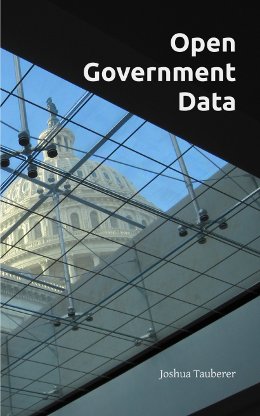The U.S. Freedom of Information Act
It wasn’t until 1966 — two hundred years following Sweden — that we had a Freedom of Information Act (FOIA) here in the United States, the third such law in world history. Inspiration for FOIA came not from the ideals of European Enlightenment but from the expansion of the federal government during and after World War II, the resulting bureaucracy and record-keeping, and the increasing skill of the federal government at manipulating public opinion.1 (For more on the initial development of the modern open government movement, see Yu and Robinson (2012)2 and Harlan Yu’s dissertation.)
The burgeoning open government movement of the 1950’s and 1960’s was driven by the newspaper industry and its trade associations quite possibly with no knowledge of the precedent in Sweden. The enactment of the Freedom of Information Act here was, unlike the previous examples, motivated by idealistic principles of having an informed citizenry.
FOIA’s advocates worked for several decades with Congress and the executive branch on a compromise that created a default state of openness for government records with a few enumerated exemptions. The first compromise was targeting the executive branch only. William Matthews, editor and publisher of Tucson, Arizona’s Daily Star, wrote at the time, “As a matter of getting such a law through Congress, should we threaten that body by demanding that all committee meetings be open?”3 Members of Congress had little to worry about the Freedom of Information Act, which ultimately passed unanimously in the House, as the law left them alone. A later compromise created the conspicuous exemption for “geological and geophysical information,” which may have been insisted on, indirectly, by President Johnson, who may have been protecting the interests of the oil industry in his home state of Texas.4
Johnson only begrudgingly signed the bill later. In a signing statement he pushed back on public access to personal files and other sorts of documents. His worry, which I think was fair, was that some decisions could be made better if deliberations could remain private, essentially the doctrine of executive privilege.5
Delays and fees, such as documents copied at $1 per page, lead Congress to amend FOIA in 1974. But that wasn’t a good time for President Ford, who was in the middle of responding to The New York Times’ coverage of military leaks. Ford vetoed the changes to FOIA hoping to keep control over his office’s information, but Congress easily overrode the veto.6 There have been new laws strengthening right-to-know since then — Who Needs to Know? by Patrice McDermott (Bernan Press, 2007) is a good reference. But FOIA, and at the state level freedom of information laws (FOIL), have not kept up with technology in the least (though that’s not to say they don’t still serve an important purpose), and as I explained in Introduction serve a very different need from open government data.
Most other countries didn’t follow suit in developing FOI laws until the 1990’s and early 2000’s. For additional case studies, see 7 and 8.
FOIA is now a major operation in the U.S. federal government. The total cost of all FOIA-related activities across the federal government in FY 2008 was $338 million, mostly for the 3,691 full-time-equivalent staff processing the requests.9
-
Wallace Parks. 1957. The open government principle: Applying the right to know under the Constitution. The George Washington Law Review, 26.1. ↩
-
Harlan Yu and David G. Robinson. February 28, 2012. The New Ambiguity of “Open Government.” ↩
-
Wallace Parks. 1957. The open government principle: Applying the right to know under the Constitution. The George Washington Law Review, 26.1. ↩
-
George Penn Kennedy. 1978. Advocates of Openness: The Freedom of Information Movement. Doctoral dissertation, University of Missouri-Columbia. ↩
-
Greg Michener. April 2011. FOI Laws Around the World. Journal of Democracy. ↩
-
Cynthia Warringa van Genderen. 2013. The Right to Know: A Comparative Legal Survey of Access to Official Information in Different Countries. ↩
-
http://www.justice.gov/oip/foiapost/2009foiapost16.htm ↩
 Open Government Data: The Book
Open Government Data: The Book